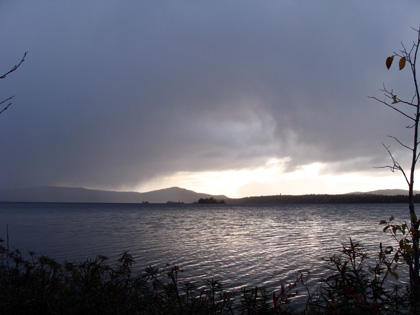State of the Environment
State of the environment
 The state of the environment in the Inari – Pasvik River area is mostly affected by the emissions of industry in the Kola Peninsula, such as acidifying sulfur compounds and heavy metals that are detrimental for the environment.
The state of the environment in the Inari – Pasvik River area is mostly affected by the emissions of industry in the Kola Peninsula, such as acidifying sulfur compounds and heavy metals that are detrimental for the environment.
Acidification |
Acidification means that soil or water bodies are losing their capacity to neutralize (buffer) acidic deposition.
Acidifying compounds are deposited with rain as wet deposition or with particles and gases as dry deposition.State of the Environment in the Norwegian, Finnish and Russian Border Area. The Finnish Environment 6/2007 Carolyn Symon (Environmental Editing Ltd)
Pasvik Programme - Summary Report 2008. Puro-Tahvanainen, A., Zueva, M., Kashulin, N., Sandimirov, S., Christensen, G.N. and Grekelä, I. 2011.
Pasvik Water Quality Report. Environtal Monitoring Programme in the Norwegian, Finnish and Russian Border Area Ylikörkkö, J., Zueva, M., Kashulin, N., Kashulina, T., Sandimirov, S., Christensen, G., Jelkänen, E. 2014
Pasvik Water Quality until 2013 Rautio, P., Poikolainen, J. 2014:
State of the terrestrial environment in the joint Finnish, Norwegian and Russian border area on the basis of bioindicators. Final technical report of the Pasvik Environment Monitoring Programme Ylikörkkö, J, Christensen, G.N., Kashulin, N., Denisov, D., Andersen, H.J., Jelkänen, E. (edit.) 2015:
Environmental Challenges in the Norwegian, Finnish and Russian Border Area
Image: Jukka Ylikörkkö
